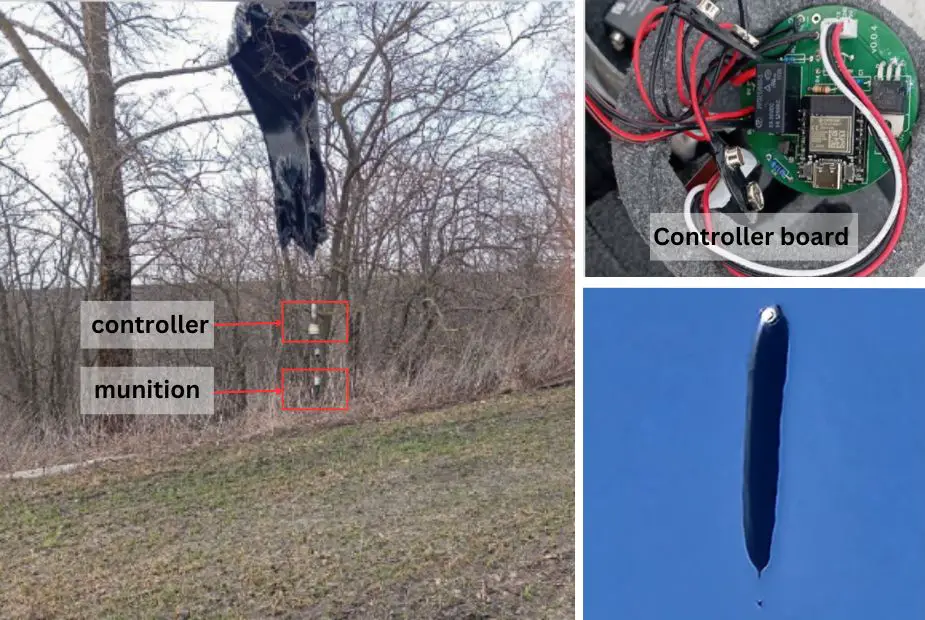Breaking news
Ukraine Launches Long-Range Balloon Drones in Tactical Shift Against Russia.
According to various photos published on the Telegram channel @йБелгородский отряд in March 2024, Ukraine has deployed a new type of long-range drone: high-altitude balloons equipped to drop mortar bombs. These sophisticated yet cost-effective devices are controlled using commercially available advanced electronics, including satellite communications, enabling them to be directed with significant precision over long distances. This innovation benefits from recent software improvements and a better understanding of wind patterns, thus enhancing the strategic capabilities of the Ukrainian forces.
Follow Army Recognition on Google News at this link

The electronic components found in the remains of these balloons demonstrate a high level of technical sophistication (Picture source: Telegram channel @йБелгородский отряд)
The deployment of these balloons signifies a strategic shift in Ukraine's military approach, aiming to deliver explosive payloads deep into Russian territory. According to Russian state media reports and independent analyses, these balloons are capable of carrying various payloads, including conventional explosives and devices designed to mimic attack drones, potentially drawing fire from Russian air defenses.
Initially, similar tactics were observed in February 2023 when Ukraine intercepted several Russian balloons. These were believed to be standard weather balloons equipped with radar reflectors, used as decoys to shield actual military operations involving drones and missiles. More recently, reports have emerged about Russia downing armed Ukrainian balloons, indicating a reciprocal use of this lesser-known aspect of aerial warfare.
Experts suggest that the simplistic appearance of these balloons hides their potential as an effective asymmetric weapon. They can reach operational depths previously inaccessible to standard drones at a fraction of the cost and risk. Notably, the electronic components found in the remains of these balloons demonstrate a high level of technical sophistication. Items such as a Bluetooth module, GPS trackers, and even commercially available components like the ESP32-H2-Mini-1 microcontroller and the GP1818MK GPS module suggest a practical yet innovative approach to warfare.
This method recalls historical instances of balloon-based warfare, such as the Austrian attack on Venice in 1849 and the Japanese FuGo incendiary balloons during World War II. However, the modern incarnation appears much more advanced, with capabilities that could potentially allow these balloons to navigate using stratospheric winds, offering a new level of strategic utility.
The presence of radar reflectors on these balloons also indicates a dual-purpose strategy: while they can be used to monitor and possibly confuse enemy defenses, they also make the balloons visible to radar systems, likely ensuring that each deployment consumes significant enemy resources in terms of detection and interception efforts.
In response to the increasing use of such tactics, there may be a resurgence in specialized countermeasures, reminiscent of the Soviet era when high-altitude interceptors like the M-17 Mystic were developed specifically to counter high-flying reconnaissance balloons. As the conflict evolves, the adaptation of both offensive and defensive strategies around these balloon drones underscores the ongoing innovation in military technology and tactics.
Defense News April 2024























